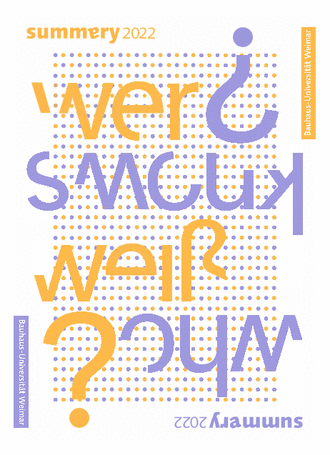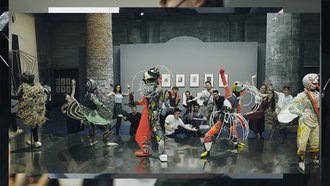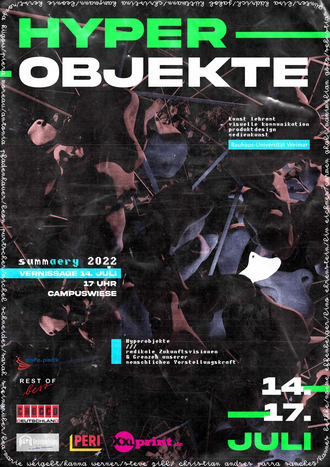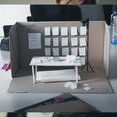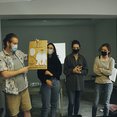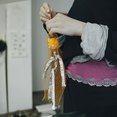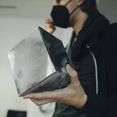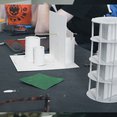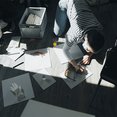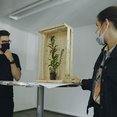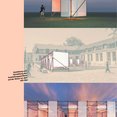Projects at summaery2022: Discussing hyperobjects and the limits of the human imagination with students
This year, the Bauhaus-Universität Weimar’s annual show has the intentionally ambiguous bilingual title of »Wer weiß? | Who knows?« and explores how, where and by whom knowledge is produced. The project »Hyperobjects – radical visions of the future / the limits of our human imagination« is among those due to be showcased: twenty students from the fields of art education, product design, media art and visual communication have each devoted themselves artistically to their own hyperobjects, i.e. topics whose extent surpasses the understanding of space and time. The spectrum ranges from collective phenomena such as climate change, the relationship between nature and technology or the scarcity of resources to topics like anonymity, identity, time, death or loss that affect people in different ways. We spoke to the students Antonia Stella Pfadenhauer and Maximilian Götz as representatives for all course participants and asked them about their work and »knowledge«.
What’s so special about your topic or methods?
Antonia Stella Pfadenhauer: The »Hyperobjects« project module stands out precisely because it addresses an intangible subject that is nonetheless omnipresent and affects almost everyone in very personal ways. To address these phenomena artistically with the aim of encouraging others to reflect on them is not only a challenge, but also requires a certain amount of perseverance and motivation. Our project group experienced tremendous support and development through the weekly mutual feedback and help.
Maximilian Götz: I looked at the concept of emptiness or nothingness, for example. This is a notion that, by its very nature, cannot be grasped or proven. The only way we can approach emptiness is through how and where we encounter it. Time and time again, the encounter with nothingness plays a role in philosophy, computer science and physics, but also in mysticism as well as in pop culture.
It sounds like you also had to overcome some »hurdles« during the learning process?
MG: One of the greatest difficulties each time was to review with a critical eye the ideas that had already grown on us, to refine them and to leave out anything that was not relevant. »Killing your darlings,« as they say in English.
ASP: I felt the same. It was only when I came to implementing my idea that I realised how important it is to also spontaneously find a solution to challenges and unexpected problems. My installation was originally designed for a soundproof room. Since this was not possible in the open space in front of the Van de Velde Building, I had to come up with a feasible solution in a relatively short time and adapt the implementation. To prepare for this, we did a lot of »rapid thinking« tasks within the project – we attempted to develop lots of different problem-solving ideas, for example.
What sources did you use to acquire knowledge for your project and how did you access them?
MG: From Buddhist koans to maths deep dive videos, I conducted my research on the topic online. At the same time, I sought the advice of fellow students who had more knowledge and experience in this area when it came to practical questions about the preparation.
ASP: At the start of the semester, our lecturer provided us with a list of sources that had considered this topic in different ways: recommendations for the German science fiction thriller series »DARK« or novels like Kafka’s »The Castle«, etc. allowed us to explore the subject according to our personal interests. The exchange in the plenary also granted insights into different perspectives. New and exciting ideas could even be drawn and reflected upon from one or other difference of opinions.
Was there also a »highlight« during the project?
MG: For me, our trip to the Venice Biennale was a source of great inspiration for everything else I did this semester.
ASP: I couldn’t agree more. The trip to Venice and the visit to the »Biennale Arte« was definitely a highlight. I had never seen such a large art exhibition, and the internationality of the artists was most impressive. My understanding of installations, video art, conceptual art, etc. was fundamentally influenced and expanded. Our lecturer always encouraged us to »think big«, but the Biennale pushed me to break out of the small framework I was used to.
What’s next, after the summaery?
ASP: We plan to produce a magazine about our impressions of the Biennale as well as written documentation of our project, implementation and ideas. Until then, let’s hope that everything works! For there has never been such a set-up on the open space in front of the Van de Velde Building – at least not as long as I’ve been studying here.
MG: I also plan to showcase the installation in a public space, in a slightly modified format. I find art particularly exciting when it leaves the boundaries of its exhibition and appears in a very everyday context. I find topics like the ones we devoted ourselves to within the project that are so unapproachable extremely interesting.
For more information on all summaery2022 projects and the full programme, see: www.uni-weimar.de/summaery
The students’ ideas will be displayed during the summaery, from 14 to 17 July 2022, in an expansive, large-scale exhibition in front of the Main Building. The project was supervised by Christian Andrés Parra Sánchez from the Professorship for Teaching Art Education of the Faculty of Art and Design.
Exhibition venue:
Open space outside the Van de Velde Building
Faculty of Art and Design
Geschwister-Scholl-Str. 7
99423 Weimar
More information on the project: https://www.uni-weimar.de/de/universitaet/aktuell/jaehrliche-veranstaltungen/jaehrliche-veranstaltungen-2022/summaery/projekte/?tx_showcase_summaeryprojectpublic

